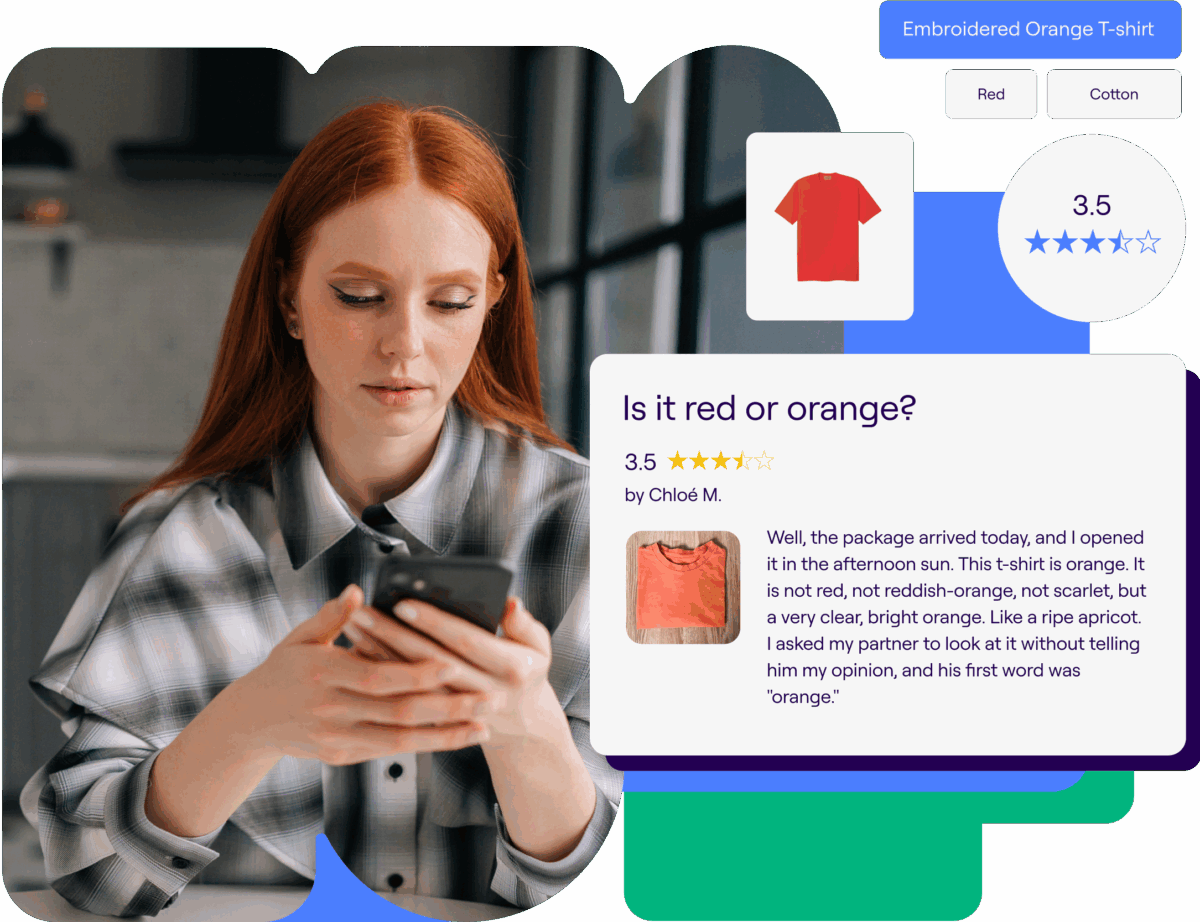Missing or inaccurate product information costs more than just a sale—it drives cart abandonment, returns, and lost loyalty. Explore the biggest ways poor product data impacts revenue and discover how PIM equips brands to deliver high-quality product experiences that increase conversions, protect margins, and build lasting customer relationships.

Table of Contents
Keywords
In a relationship, any therapist will tell you that clear communication is the foundation for success. Both people need to understand each other fully, or misinterpretations and frustration quickly follow.
The same holds true for a relationship between a customer and a business; if the customer doesn’t receive clear, consistent, and accurate information, trust begins to erode and the relationship starts to break down.
The unfortunate reality is, this miscommunication and misalignment happens all too often. In the past year alone, two-thirds of consumers abandoned a significant purchase because product information was missing or inaccurate. That’s a direct hit to revenue, trust, and retention. Customers can’t make confident decisions when the details they need aren’t there, and in today’s competitive market, they won’t hesitate to move on to a competitor who delivers the clarity they expect.
But how exactly does poor product data damage sales, and what exactly does ‘poor product data’ even look like in the market? Let’s break down the biggest ways poor content holds brands back and how you can avoid these costly pitfalls!
Before we can fix bad data, we need to know how to spot it. Poor product information isn’t always obvious—it doesn’t just mean missing details. It shows up in many ways across the customer journey, each with the power to lessen a customer’s commitment to a product or even worse, a brand.
It might look like incomplete specs that leave shoppers guessing about size, fit, or compatibility. Or inconsistent pricing between your website and marketplace listings that makes buyers suspicious. It can even be vague or generic descriptions that make your product sound like everyone else’s, or worse, conflicting details across channels that create confusion instead of clarity!
As we all know, today’s shoppers expect clarity, relevance, and transparency, and when businesses fall short, the consequences are immediate and costly. From abandoned carts and missed conversions to rising return rates and eroded loyalty, poor product data doesn’t just create frustration; it directly translates into lost sales and weakened customer trust.
Customer patience with poor product information is wearing thin. In 2023, only 13% of consumers said they were dissatisfied with the comprehensiveness of product data, but by 2025, that figure jumped to 30%, more than doubling in just two years. As frustration rises, shoppers won’t hesitate to abandon their carts, turning poor product data directly into lost sales.
As we mentioned earlier, a lack of product information led two-thirds of shoppers to give up on a major purchase within the past year. And the damage doesn’t just stop there. Globally, we found that 77% say they’d even consider switching to a lower-cost, lower-quality alternative if the right details weren’t available. Essentially, your poor product data can result in your cheapest competitor making a sale!
Two-fifths of consumers globally returned a product in the past year because the details didn’t match the reality. Returns like these drain your bottom line and your credibility, leaving customers cautious instead of confident.
One-size-fits-all descriptions don’t persuade modern shoppers. Customers expect details that speak to their needs, values, and preferences. Without relevance, they disengage and abandon businesses. It’s no surprise that over half of consumers say they would become more loyal to brands that provide personalized shopping experiences. In today’s world, generic content fails to keep shoppers’ attention, costing long-term relationships.
Today’s consumers want brands to reflect their principles. Yet brand values, sustainability claims, and supply chain transparency are consistently rated among the least comprehensive areas of product information. The cost of this omission is high: 42% of consumers say they would pay more if a brand clearly shared its values, with those willing to do so prepared to spend an average of 25% extra. Without a doubt, customers will spend less and look elsewhere for a brand they can believe in.
So, we know what bad product data looks like, and how it can impact your business. But now, we need to take a look at what good product data looks like – and how you can provide it to customers.
Make sure every detail, from pricing to specs to compatibility to availability, matches across all channels. Customers see the same story whether they’re on your site, browsing a marketplace, or shopping in-store. Utilizing a syndication tool such as Akeneo Activation can allow you to automatically send enriched, accurate, and reliable product information to every channel and marketplace, ensuring consistency and a unified product experience wherever your shoppers engage!
Good product data answers every key question before it’s asked. Size, dimensions, technical features, and compatibility details are all covered, leaving no room for hesitation!
Beyond the basics, strong product content includes sustainability credentials, allergen or nutritional details, brand values, and more. These enrichments should meet the rising demand for context and authenticity.
Great product data adapts to the customer! Tailored recommendations, personalized messaging, and content that reflects prior behaviors all turn information into a driver of loyalty. But in order to provide such a tailored experience, you need to understand what your customers want, and how they actually speak about and use your products. This is where a tool like Akeneo’s PX Insights can come in handy. By pulling in real-time insights from real customer feedback directly into your product information management solution, you’ll be able to personalize your product data to match customer language and expectations.
High-quality images, videos, and other types of media help customers understand products better than words ever could. And the future of product storytelling goes even further. Virtual reality (VR) and augmented reality (AR) tools allow shoppers to interact with products in immersive ways, seeing how furniture looks in their living room or visualizing clothing fit in 3D. Rich visuals close the gap between physical and digital experiences.
Now that we have a proper understanding of what sets good product content apart from bad product content, the question becomes, how do you provide high-quality product data to customers?
The truth is, many businesses struggle to provide consistent, reliable product data to consumers because their product information is scattered across spreadsheets, legacy systems, or siloed teams, which makes errors inevitable. Without a centralized way to manage content, those gaps only widen, causing even more damage to your business.
This is where a Product Information Management (PIM) solution changes the game. By creating a single source of truth, a PIM ensures every detail is accurate, complete, and consistent, no matter where customers encounter it. Beyond solving errors, PIM scales your content across channels and integrates with enrichment technologies like AI to tailor and enhance experiences for individual shoppers. Pair that with personalization and the result is clear: higher conversions, fewer returns, and stronger customer loyalty in an increasingly competitive market!
Poor data creates friction, and in today’s competitive market, where customers are less forgiving, they won’t wait around for you to fix it. They’ll turn to a competitor who delivers the clarity they need.
The good news is, businesses don’t have to settle for disjointed, error-prone content. With the right strategy and the right tools, you can transform scattered, inconsistent data into a powerful driver of conversion, satisfaction, and long-term growth. Put simply: clear communication builds trust in personal relationships, and it does the very same in commerce. If you want to win customers—and keep them—start with better product data.
Want to dive deeper into how consumer expectations are evolving? Download our latest Consumer Survey Report to discover the full findings and uncover what today’s shoppers really need from your product information.
Discover what global consumers revealed about their evolving expectations and why better product information, not just better tech, is the key to winning hearts, sales, and loyalty.
